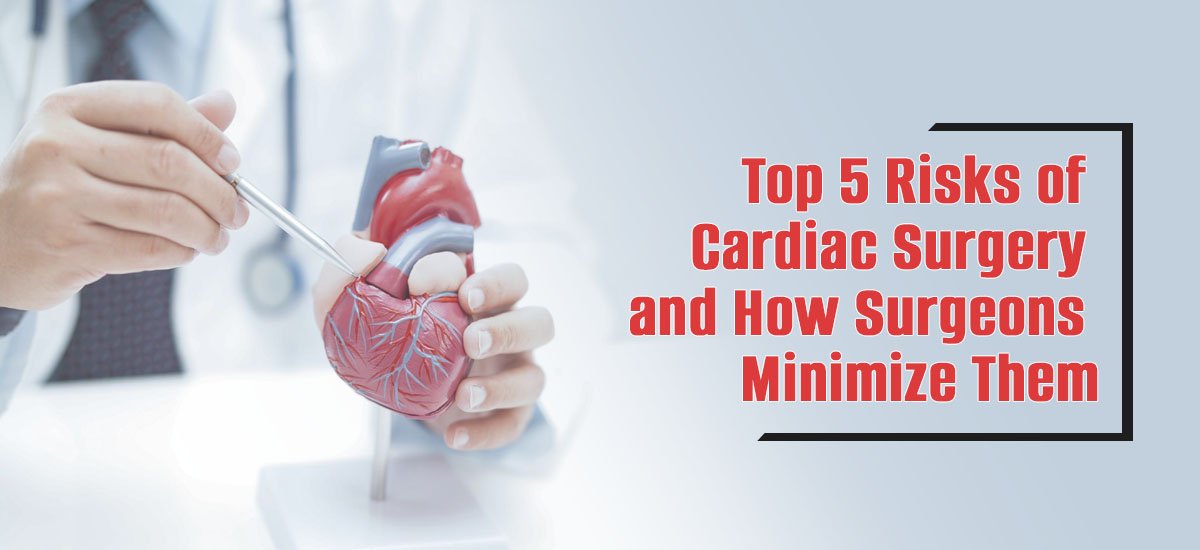Top 5 Risks of Cardiac Surgery and How Surgeons Minimize Them
Home - Bog - Top 5 Risks of Cardiac Surgery and How Surgeons Minimize Them

Top 5 Risks of Cardiac Surgery and How Surgeons Minimize Them
Cardiac surgery is a life-saving procedure, but like any major operation, it comes with risks. While advancements in medical technology have significantly improved patient outcomes, understanding potential risks can help individuals make informed decisions. Dr. Ganesh Shivnani, a leading cardiac surgeon, ensures that every patient receives the highest standard of care while minimizing surgical complications. Here are the top five risks associated with cardiac surgery and the proactive measures taken to mitigate them.
1. Infection
Risk:
Post-surgical infections, particularly at the incision site, can occur in some patients, leading to delayed healing and potential complications.
How Surgeons Minimize It:
- Sterile Environment: Surgical teams follow stringent sterilization protocols to reduce infection risks.
- Prophylactic Antibiotics: Patients receive antibiotics before and after surgery to prevent bacterial infections.
- Wound Care Management: Regular monitoring and proper wound care techniques help ensure a smooth recovery.
2. Blood Clots and Stroke
Risk:
Blood clot formation can occur post-surgery, potentially leading to a stroke or other vascular complications.
How Surgeons Minimize It:
- Anticoagulant Therapy: Blood thinners help prevent clot formation before and after surgery.
- Early Mobilization: Encouraging patients to move as soon as possible after surgery reduces clot risks.
- Compression Devices: Special stockings and devices promote circulation and prevent deep vein thrombosis (DVT).
3. Bleeding and Hemorrhage
Risk:
Excessive bleeding during or after surgery can be a concern, sometimes requiring additional interventions.
How Surgeons Minimize It:
- Advanced Surgical Techniques: Precision cutting and cauterization methods help control bleeding.
- Clotting Factor Monitoring: Surgeons closely monitor clotting factors to ensure proper blood coagulation.
- Post-Operative Monitoring: Continuous observation in the ICU helps detect and manage any bleeding early.
4. Irregular Heart Rhythms (Arrhythmias)
Risk:
Some patients experience arrhythmias, or abnormal heartbeats, after surgery, which can affect overall recovery.
How Surgeons Minimize It:
- Beta-Blockers & Medications: Certain medications help stabilize heart rhythms post-surgery.
- Close ECG Monitoring: Continuous heart monitoring ensures early detection and prompt intervention if needed.
- Lifestyle Guidance: Patients receive post-surgical advice on diet and activities to maintain a healthy heart rhythm.
5. Lung Complications
Risk:
Due to prolonged anesthesia and limited mobility post-surgery, some patients may develop lung-related issues like pneumonia or fluid buildup.
How Surgeons Minimize It:
- Breathing Exercises: Incentive spirometry helps strengthen the lungs and prevent fluid accumulation.
- Early Ambulation: Encouraging movement reduces lung congestion and enhances recovery.
- Oxygen Therapy & Monitoring: Proper oxygenation supports lung function and prevents complications.
While cardiac surgery carries some inherent risks, experienced surgeons like Dr. Ganesh Shivnani use cutting-edge techniques, rigorous monitoring, and personalized care plans to minimize these risks effectively. If you or a loved one are considering cardiac surgery, it's essential to have an open discussion with your surgeon about potential risks and preventive measures.
For expert cardiac care, trust the hands of an experienced professional. Schedule a consultation with Dr. Ganesh Shivnani today to ensure your heart health is in the best care possible.
